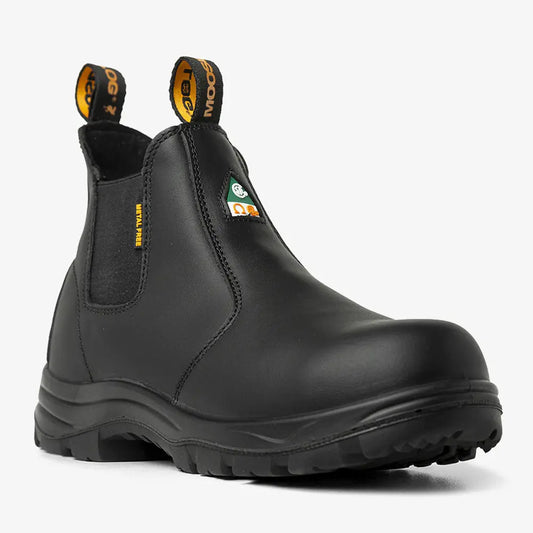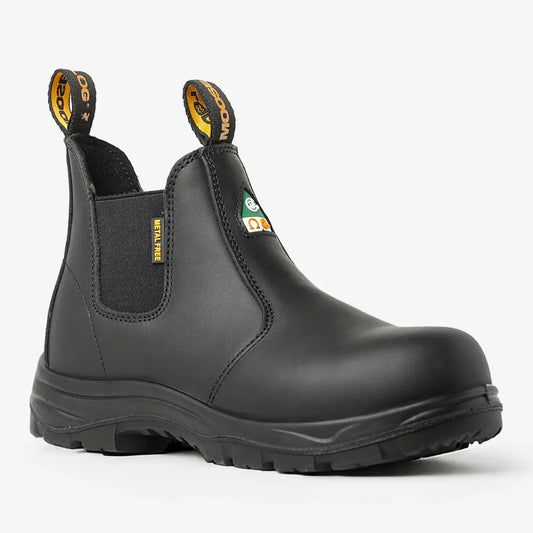
What Makes a Jobsite Safe? Canada’s Workplace Safety Regulations Guide
A safe jobsite is built on awareness, planning, and responsibility. It is a place where everyone understands the risks and takes action to reduce them. Canada has clear laws that guide how safety must be managed at work.
Knowing these regulations helps every tradesperson protect themselves and their crew. Safety is not paperwork. It is a habit that decides whether a shift ends safely or with injury.
Canada’s Workplace Safety Laws
Workplace safety in Canada is guided by the Occupational Health and Safety (OHS) system. Each province and territory runs its own OHS program, but the core rules are similar across the country.
Federally regulated industries, such as transportation, shipping, and communications, follow the Canada Labour Code Part II.
The goal of all OHS laws is simple: prevent accidents before they happen. The main principles are:
- Identify and control hazards.
- Provide proper training and supervision.
- Supply and maintain the right protective equipment.
- Record incidents and improve procedures.
Both employers and workers have duties under these laws. Each side must do its part to keep the site safe.
Employer Responsibilities
Employers carry the legal duty to make sure a worksite is safe. Their role includes:
- Completing hazard assessments before starting any job.
- Providing CSA-certified PPE such as safety boots, gloves, and helmets.
- Keeping all tools and machines in safe working condition.
- Offering training and refresh courses for every worker.
- Having an emergency plan for fire, chemical, or medical incidents.
Most provinces require a Health and Safety Representative or committee when a workplace reaches a certain number of employees. These groups inspect sites, review concerns, and help prevent issues before they cause harm.
When employers follow these standards, the site runs more efficiently, and everyone benefits.
Worker Rights and Responsibilities
Every worker in Canada has three main safety rights:
- The right to know about hazards.
- The right to participate in safety discussions and inspections.
- The right to refuse unsafe work.
With these rights come responsibilities. Workers must use PPE correctly, follow safety instructions, and report hazards immediately. A safe site depends on cooperation between everyone on the ground.
The Canadian Centre for Occupational Health and Safety (CCOHS) puts it best: safety is a shared job.
PPE and CSA Standards
Personal protective equipment is a legal requirement when hazards cannot be removed by other means. PPE reduces injury risk from impacts, punctures, and electrical exposure.
CSA Footwear Standards

The CSA Z195-14 (R2025) standard defines protective footwear in Canada. It tests boots for impact, compression, puncture, electric shock, and other risks.
Every CSA-approved boot carries a tag that identifies its protection level:
- Green triangle — safety toe and puncture-resistant sole.
- Yellow triangle — puncture protection only.
- White rectangle — electrical shock protection.
- Orange omega — static-dissipative protection.
For most trades, the green triangle is mandatory. It means the footwear is safe for construction, manufacturing, and industrial work.
When PPE Is Required
OHS laws require employers to provide PPE when risks cannot be eliminated by engineering or administrative controls. Workers must receive training on proper use and maintenance.
If falling objects, sharp debris, or electrical hazards exist, PPE is not optional. It is the final layer of defence on any jobsite.
Hazard Control and Inspections
Hazard control follows a simple order known as the hierarchy of controls:
- Remove the hazard entirely.
- Replace it with a safer option.
- Use barriers or guards to protect workers.
- Adjust schedules or methods to reduce exposure.
- Use PPE for anything that remains.
Site inspections confirm that these controls are active and effective. Supervisors often inspect daily, while health and safety committees inspect monthly.
Inspection reports document problems such as missing guardrails, damaged wiring, or poor lighting. These records prove that safety measures are consistent, not occasional.
Penalties and Enforcement
Each province’s labour ministry has inspectors who visit jobsites and enforce compliance. They can issue orders, fines, or stop-work notices when laws are ignored.
The Westray Bill (Bill C-45) gives courts the power to charge employers and supervisors with criminal negligence if unsafe practices lead to serious injury or death. This law reminds everyone that safety is a legal and moral duty.
Accountability keeps workplaces safe and reinforces respect for the law.
Creating a Safety Culture
The best jobsites are consistent. Workers know the routine and trust that everyone is watching out for each other. A true safety culture shows up in the details.
- Checking a ladder before climbing.
- Inspecting boots and gloves at the start of a shift.
- Cleaning up spills before someone slips.
- Reporting issues right away.
When workers take pride in these small actions, safety becomes part of the job itself. Productivity improves, and the entire crew benefits.
Conclusion
Safety on Canadian jobsites is a shared system built on clear rules and respect for those rules. Employers must provide training and equipment. Workers must use it properly. Regulators must enforce the law fairly.
From PPE rules to CSA standards, every step exists to make sure workers go home in the same condition they arrived.
MooseLog supports that goal with certified protective footwear tested for impact, puncture, and electrical hazards. Every pair is designed for Canadian job conditions and made for long shifts in demanding environments.




